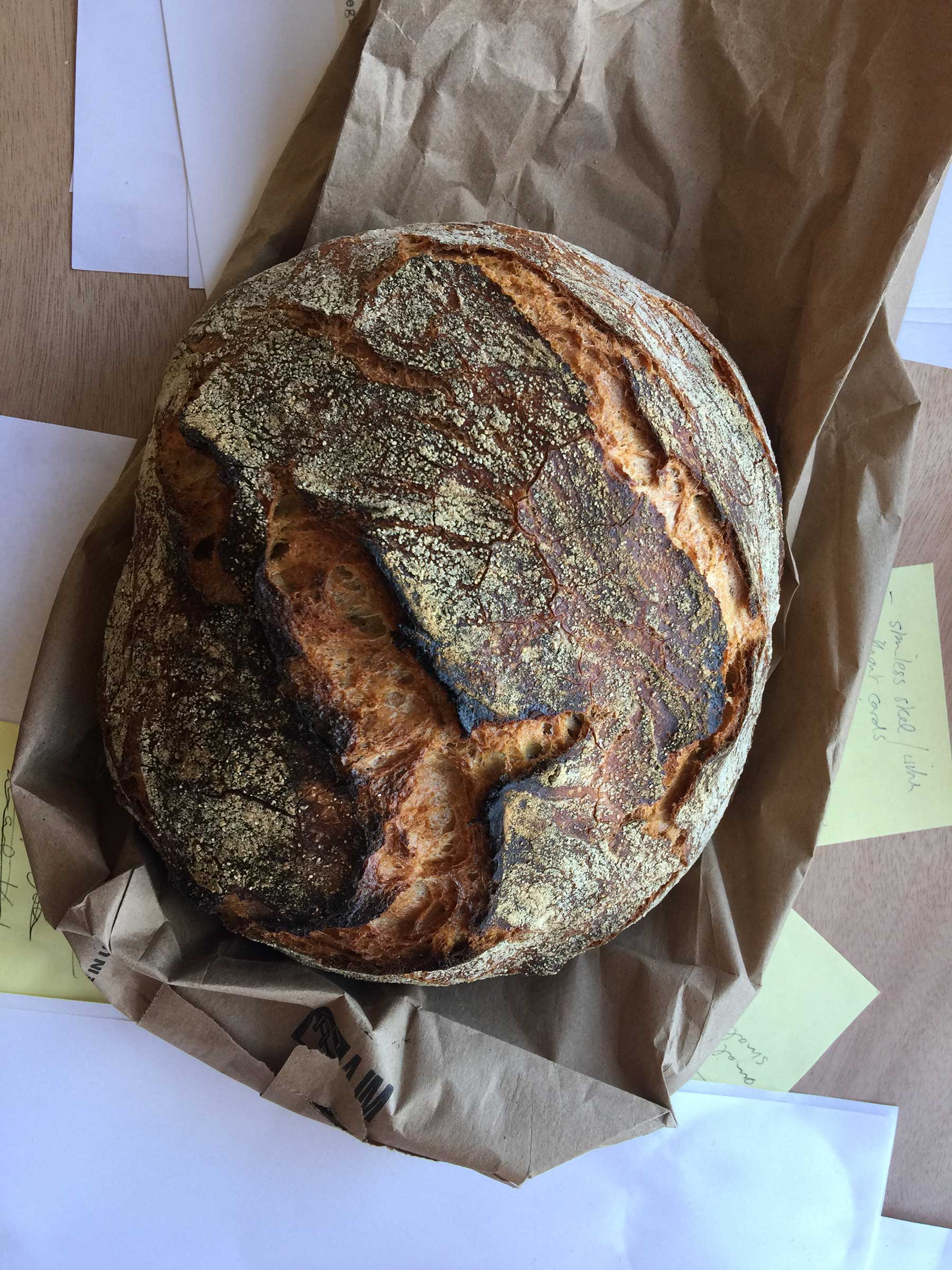Bread for A Home / In A Museum
A museum visitor, with whom I had an extended conversation in the McCormick House, returns a week later with bread. He leaves it on my table. Only later do I learn that it is homemade.
A Bit of Bread (by Daniel Buren)
An empty museum or gallery means nothing, to the extent that it can at any time be transformed into a gym or baker’s, without changing what will be sold there, in terms of works of art in the future, since the social status will also have changed. Placing/exhibiting a work of art in a baker’s will in no way change the function of the aforementioned baker’s, which will never change the work of art into a bit of bread either. Read more
Placing/exhibiting a bit of bread in a museum will in no way change the function of the aforementioned museum, but the latter will change the bit of bread into a work of art, at least for the duration of its exhibition.*
Now let’s exhibit a bit of bread in a baker’s and it will be very difficult, if not impossible, to distinguish from the other bits of bread. Now let’s exhibit a work of art – of any kind – in a museum: can we really distinguish it from other works of art?
From Function of Architecture
Notes on work in connection with the places where it is installed taken between 1967 and 1975, some of which are specially summarized here.
*But what if the museum is also simultaneously a home, as is the case with my project for the McCormick House? Will the bread be art until I start to eat it? Or is it art and a bit of bread at the same time for the duration of the exhibition / my residence? Or does it stay art while I eat it, since eating and digesting are sculptural processes? Or is the bread always just a bit of bread since the person who made it is not an artist? Or did the person who baked the bread become an artist (performer / sculptor) since his actions were motivated by my art project for which he decided to become a participant?

